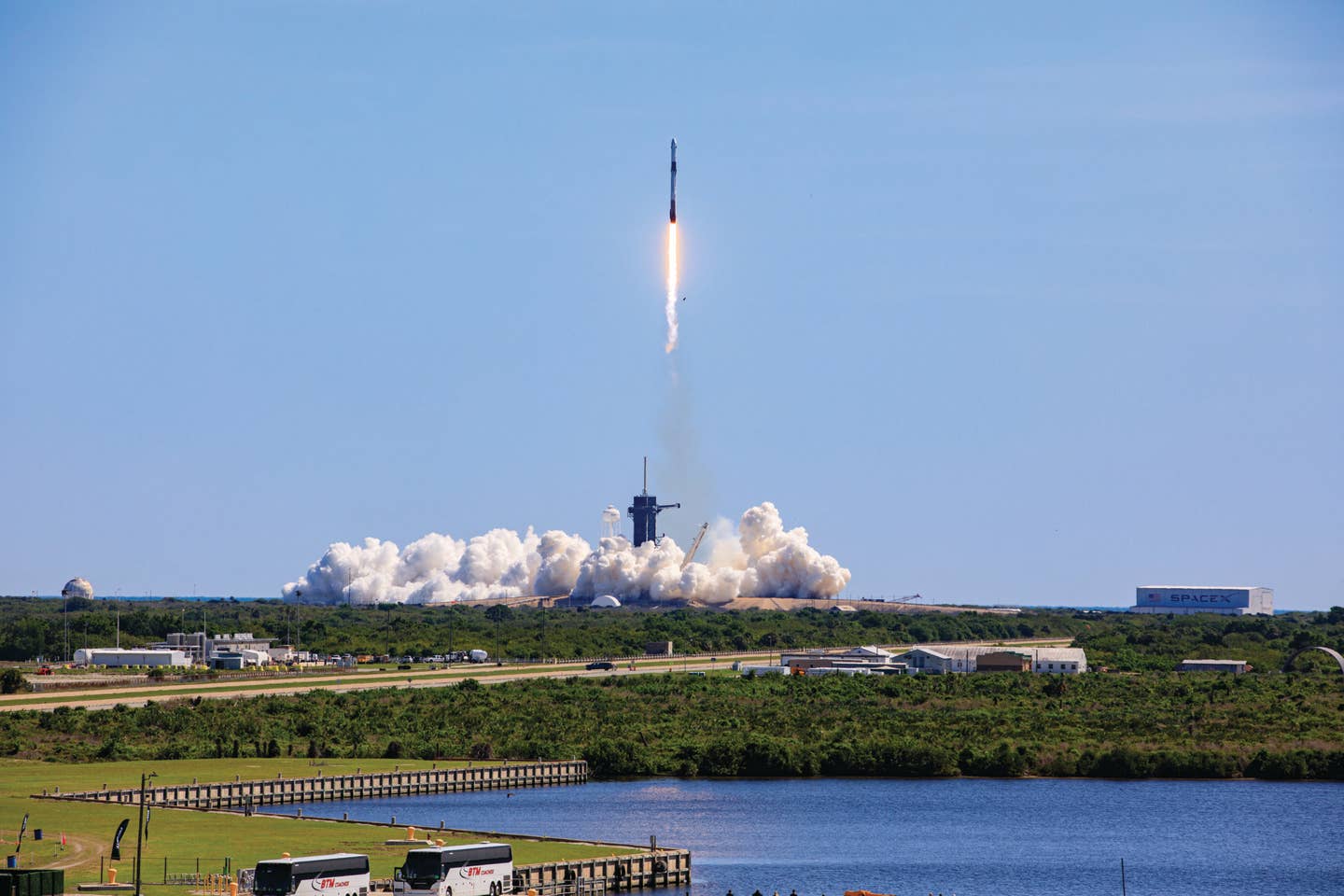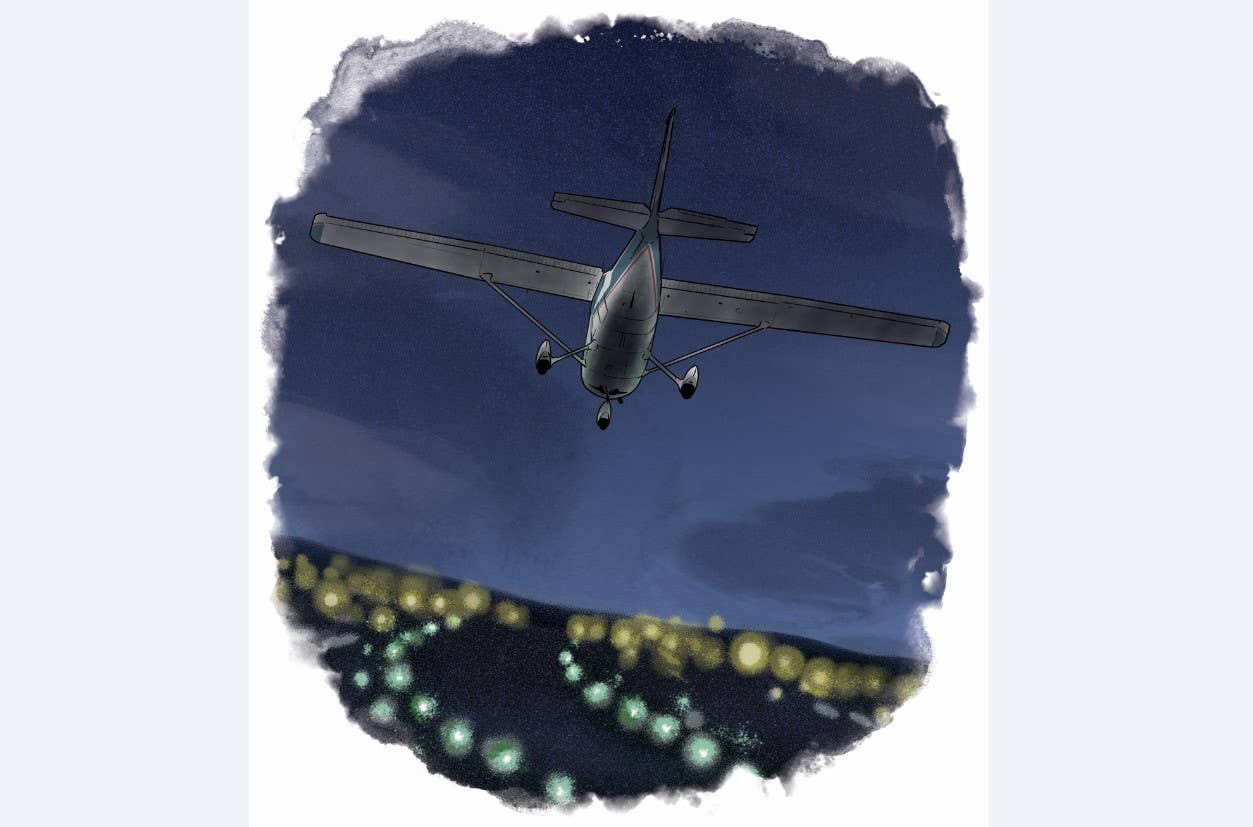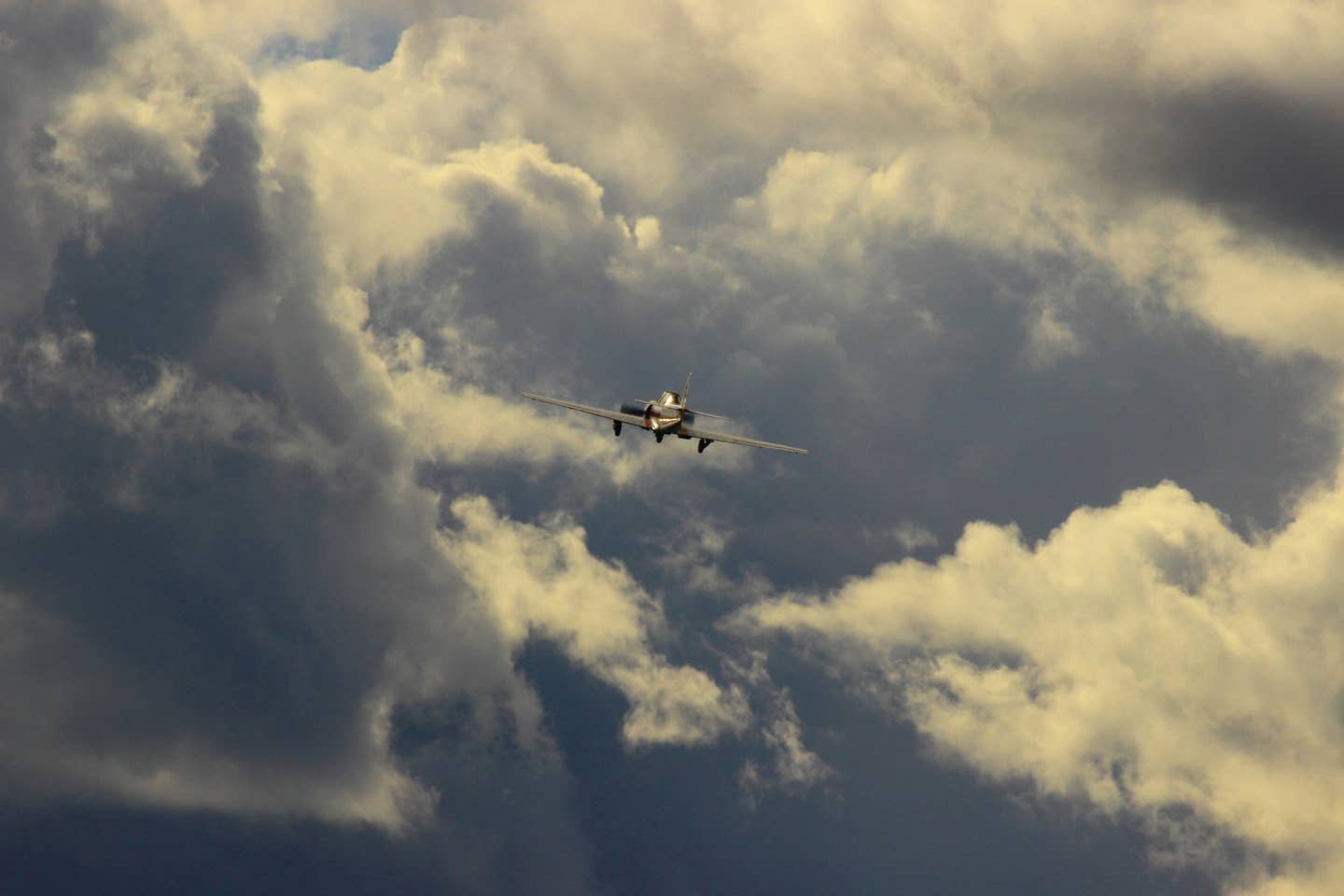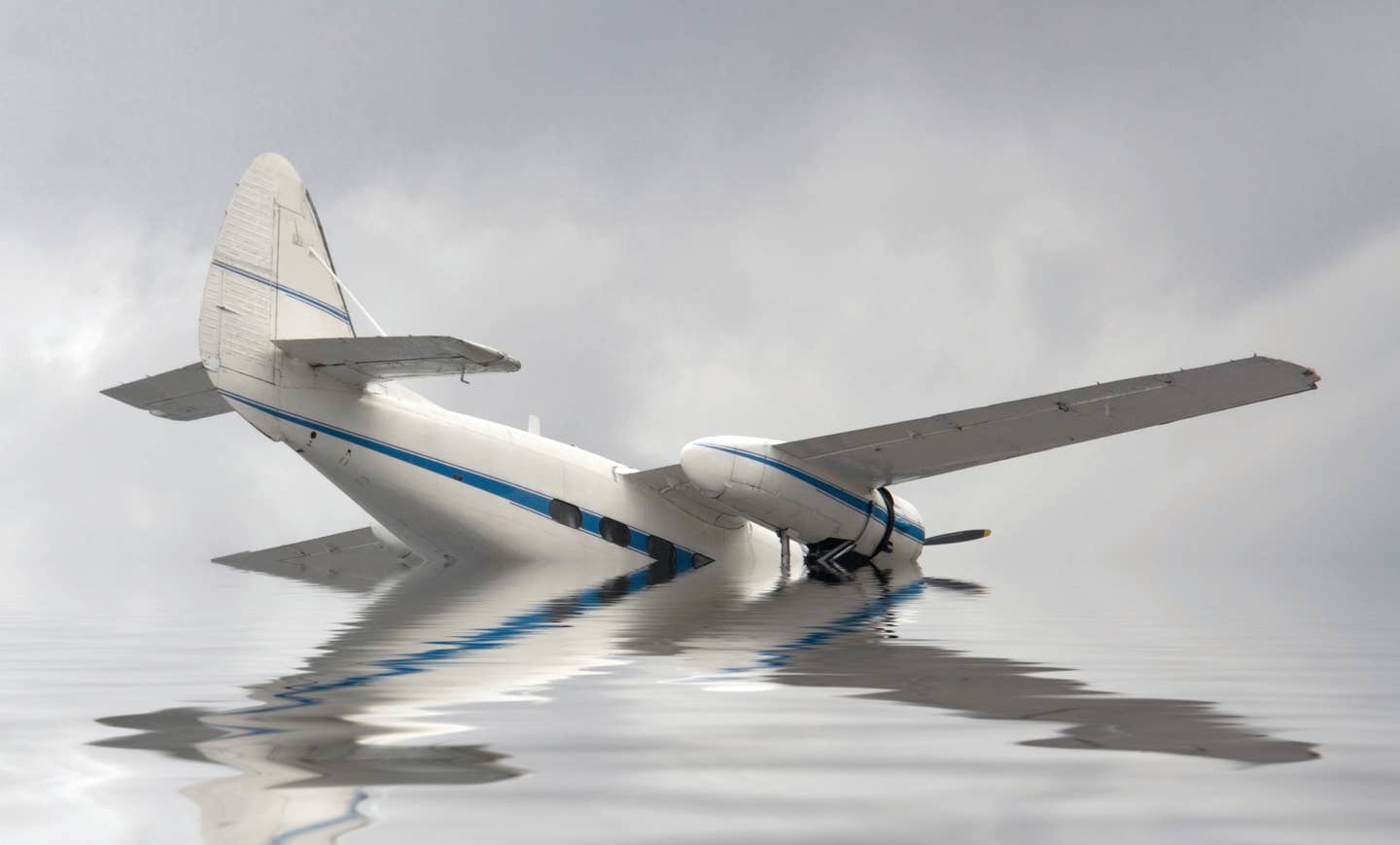Has Anybody Seen Max Q?
Airspeed measurement marks an important milestone during a rocket’s ascent.

A SpaceX Falcon 9 rocket, carrying the company’s Crew Dragon spacecraft, lifts off from Launch Complex 39A at NASA’s Kennedy Space Center in Florida at 11:17 a.m. EST on April 8, 2022, on Axiom Mission 1. [NASA]
If you followed the launch of SpaceX’s megarocket in April, you may remember hearing, amid the tumult of voices in the background, someone calling for a certain Max Q. I did. I wondered, who the heck is Max Q, anyway? He seems to be either a Leonard Zelig or Forrest Gump-like character who manages to be present at all important space events, or a kind of Waldo hidden in the crowd, or even a modern-day Tsiolkovsky or von Braun. Is he perhaps related to Q of James Bond fame?
Well, OK—you can just stretch a dumb joke so thin.
Q—uppercase here because it’s starting a sentence but normally lowercase—is the symbol aerodynamicists use for the dynamic pressure, or impact force, of moving air. It is the thing captured by your pitot tube and registered on your airspeed indicator—just a different way of expressing indicated airspeed. Max q is the peak dynamic pressure experienced by a rocket as it ascends through the atmosphere. It is an important milestone during the ascent because rockets have to be as light as possible, and so their structures are engineered to withstand no more aerodynamic stress than necessary.
We have all watched the launches of large rockets. At first they rise slowly, balancing acrobatically on a slender finger of flame. As they burn fuel and become lighter, they move faster and faster. While they ascend, the air through which they pass becomes less and less dense. At some point between liftoff, when the dynamic pressure is infinitesimal because they are hardly moving, and arrival in empty space, when it is infinitesimal again because there is no air, the product of speed squared and air density reaches a maximum. This is max q, and it defines the structural strength of the rocket. During a typical Falcon 9 launch, max q occurs at an altitude of around 10 miles, a minute or so into the flight. In order to keep max q below the design limit, many rockets throttle back their engines at some point to allow them to gain more altitude before resuming maximum acceleration.
If you're not already a subscriber, what are you waiting for? Subscribe today to get the issue as soon as it is released in either Print or Digital formats.
Subscribe NowA typical value for max q is around a third of an atmosphere, or 4 or 5 pounds per square inch. To get a feel for what this means, you can make use of the convenient fact that q at sea level is approximately 25 pounds per square foot (psf) at 100 mph. It’s proportional to the square of speed, so at 200 mph it’s 100 psf, at 300 mph it’s 225 psf, and so on. Five pounds per square inch is 735 psf, which would correspond to a speed of 540 mph (470 knots) at sea level. The rocket reaches max q at an altitude where an indicated airspeed of 540 mph means a true speed of 1,000 mph or more. (Coincidentally, an SR-71 flying at 65,000 feet at 2,000 mph would also have an indicated airspeed of 540 mph.)
Different rockets experience different values of max q, depending on their intended rate of acceleration and trajectory. Trajectory matters because rockets do not aim straight up for long. The orbital velocity they aim to achieve, somewhere above 17,500 mph, is a horizontal velocity, not a vertical one, and so the flight path of a rocket is a compromise between wanting to get above the denser portions of the atmosphere as quickly as possible and wanting to devote as much of the energy available from fuel as possible to accelerating horizontally rather than vertically.
Dynamic pressure is of obvious importance in aerodynamics. When the Wright brothers were trying to figure out how to fly, one of their preoccupations was determining the correct value of what was then called “Smeaton’s coefficient” after John Smeaton, an ingenious civil engineer of 18th century England whose work with windmills and waterwheels required him to find out how much pressure could be exerted by moving fluids. The Wrights concluded, correctly, that the value Smeaton had arrived at was too high by half. Besides, it was valid only near sea level. Once airplanes started getting up a few thousand feet, Smeaton’s single coefficient became obsolete and was replaced by a mathematical function that took into account the variation of air density with altitude.
Merely knowing that air exerts a pressure of 25 psf at 100 mph, and that its pressure is proportional to the square of speed, tells you a lot about actual airplanes. The lift and drag coefficients you hear about are just numbers you multiply by the dynamic pressure to get an actual force. For instance, if a book tells you that an airplane with a simple unflapped wing stalls at a lift coefficient of around 1.35, you can estimate that at 60 mph a wing of 120 square feet will support about 1,460 pounds. (Hint: q at 60 percent of 100 mph is 25 x 0.6 x 0.6, or 9 psf.)
The drag coefficient works the same way. The terminal velocity of a falling object, be it a skydiver or a spent rocket booster, is reached when its drag is equal to its mass. Thus, terminal velocity for a falling object represents a sort of max q in reverse.
Here is a challenge for the arithmetically nimble. Suppose you know that a certain finned object has a drag coefficient of 0.03 based on frontal area. Assuming that its drag coefficient is tripled on its way through the “sound barrier,” could it, if dropped from a sufficient height, surpass the speed of sound at sea level, which is 761 mph? How is it affected by making it larger, while preserving its shape? What would its girth be, if it were made of iron? Don’t you miss the word problems you used to get in school?
Max q imposes the maximum aerodynamic drag experienced by the rocket. One way to reduce the drag penalty might be to launch in thinner air, using an airplane to lift the rocket the first 10 miles or so to put the densest portion of the atmosphere behind it. While a rocket engine cannot lift a mass exceeding its thrust, the lift of a wing exceeds the thrust needed to propel it by a factor of at least 10 or 15. Air launch was the method Burt Rutan used to launch SpaceShipOne—but that was a suborbital flight, accelerating only to Mach 3.
For launches to orbit, overcoming gravity demands far more energy than overcoming drag. Elon Musk has argued that the energy savings from air launch is only around 5 percent, and that he would rather make his rockets 5 percent bigger than build and maintain an enormous carrier aircraft. As the old Packard car ads used to say: “Ask the Man Who Owns One.”
This column first appeared in the July 2023/Issue 933 print edition of FLYING.

Subscribe to Our Newsletter
Get the latest FLYING stories delivered directly to your inbox







